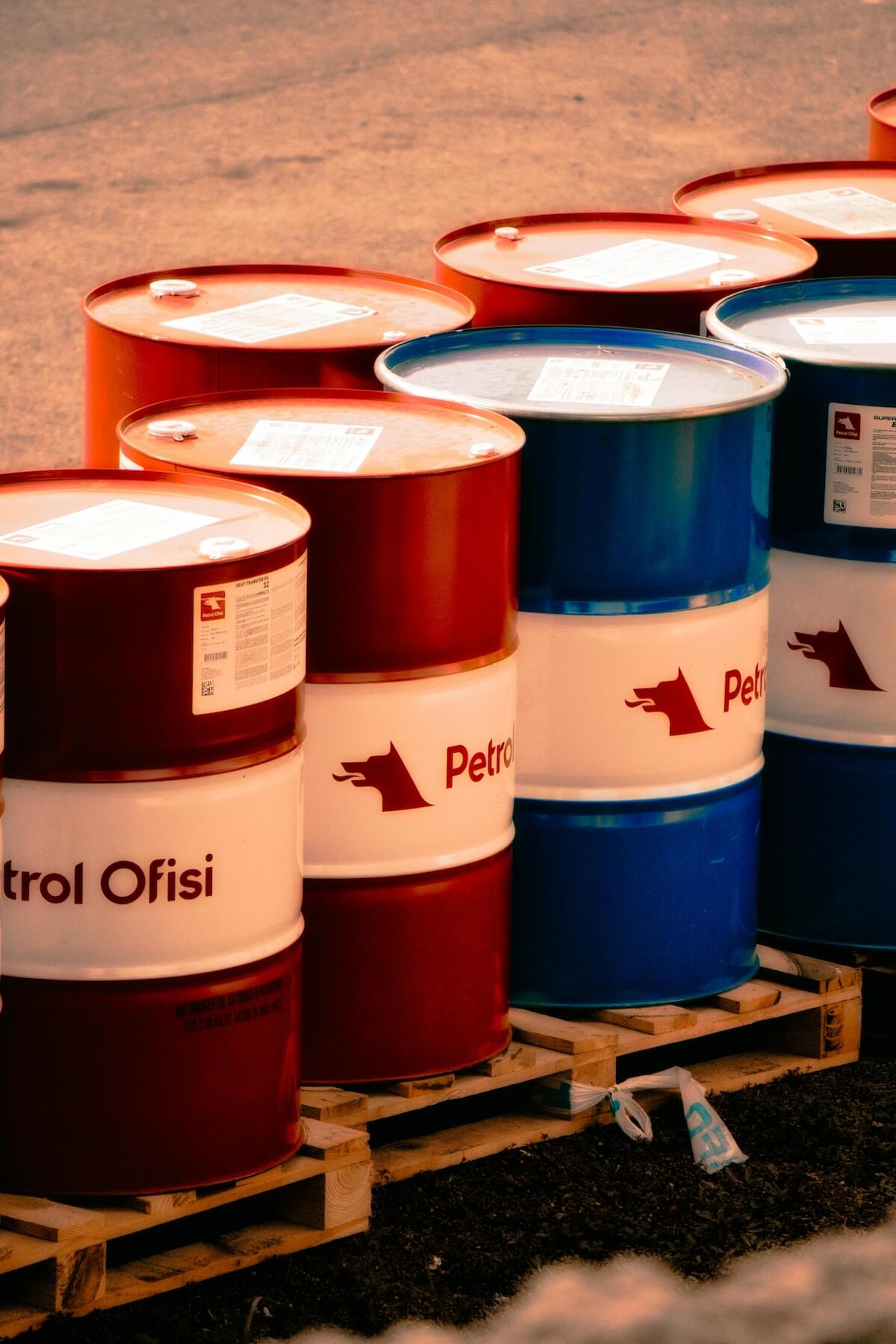Types of Crude Oil and Their Impact on Pricing
Types of Crude Oil and Their Impact on Pricing in the Commodities Market
Crude oil is one of the most valuable commodities globally, powering economies, industries, and our daily lives. In the commodities market, however, oil isn’t treated as a single, uniform product. Different types of crude oil, like West Texas Intermediate (WTI) and Brent, each have unique qualities, extraction locations, and market relevance. These differences play a significant role in how crude oil is valued, traded, and priced. This article will explore the major types of crude oil and how they impact pricing, equipping you with the knowledge needed to navigate the oil market.
What Defines Different Types of Crude Oil?
Crude oil types are primarily classified based on two main characteristics: density and sulphur content. These characteristics affect refining processes, end-product yields, and ultimately, the pricing of each crude type.
- Density: Density is measured on the American Petroleum Institute (API) gravity scale. Light crude oils, with higher API gravity, are easier to refine into valuable products like petrol and diesel. Heavier crudes have a lower API gravity, making them thicker and more challenging to process.
- Sulphur Content: Crude oil can also be classified as “sweet” or “sour” based on its sulphur content. Sweet crude has low sulphur levels (typically below 0.5%), making it cleaner to refine and ideal for high-demand products. Sour crude contains more sulphur, requiring additional refining to meet environmental standards, which adds to processing costs.
These qualities influence how different types of crude oil are priced and perceived in the market. Generally, light, sweet crudes command higher prices due to their ease of refining and higher product yield.
Classification of Crude Oil: The Basics
Crude oil is classified based on its physical characteristics, mainly density and sulphur content. Density determines whether crude is considered “light” or “heavy,” while sulphur content classifies it as “sweet” or “sour.” Each characteristic has implications for refining and pricing.
- Density (API Gravity): Crude oil’s density is measured by the American Petroleum Institute (API) gravity scale. Lighter oils, with higher API gravity, are easier to refine and produce more high-demand products, like petrol. Heavy crude has a lower API gravity, making it thicker and harder to process.
- Sulphur Content: Sulphur is an impurity that affects refining. Sweet crude has a low sulphur content (below 0.5%) and is easier and less costly to refine. Sour crude, with higher sulphur content, requires more processing to meet environmental standards, leading to additional costs.
These characteristics influence pricing and demand. Light, sweet crude oils are generally more desirable because they’re easier to process, while heavy, sour crudes tend to be less costly but more challenging to refine.
Key Types of Crude Oil in the Commodities Market
Certain crude oil types serve as benchmarks, setting the pricing standard for other oils. Here’s a look at the main types of crude oil in the global commodities market and how they impact pricing.
-
West Texas Intermediate (WTI)
West Texas Intermediate, often abbreviated as WTI, is a light, sweet crude oil sourced primarily from Texas and surrounding regions in the United States. With its high API gravity and low sulphur content, WTI is easy to refine into petrol, diesel, and other valuable products. This quality makes it a favoured type of crude oil, particularly in the United States.WTI is traded on the New York Mercantile Exchange (NYMEX) and serves as a benchmark for pricing crude oil in North America. Due to its high quality, WTI often commands a premium price in the U.S. market. However, it can be impacted by domestic supply issues, such as storage constraints and regional production fluctuations. For traders, WTI prices are seen as an indicator of U.S. oil market conditions and domestic demand.
-
Brent Crude
Brent Crude is a blend of oil extracted from fields in the North Sea, making it a key benchmark for oil prices in Europe, Africa, and Asia. While it is slightly heavier and contains more sulphur than WTI, Brent is still considered a high-quality, light, sweet crude. Brent is traded on the Intercontinental Exchange (ICE) and is highly influential in global oil pricing.Brent often reflects global market conditions more closely than WTI, given its international reach. As a result, Brent prices are generally more sensitive to global events, such as geopolitical tensions, OPEC production changes, and shifts in demand from large importers like China and India. The difference in price between Brent and WTI is known as the Brent-WTI spread, a key metric for traders as it highlights regional market disparities.
-
Dubai/Oman Crude
Dubai and Oman crude oils are medium, sour oils produced in the Middle East, primarily used as benchmarks for pricing oil in Asia. Dubai and Oman oils have higher sulphur content, making them sour and slightly more difficult to refine than Brent or WTI. However, their proximity to Asia’s growing markets makes them attractive for Asian refineries, many of which are equipped to handle sour crude.Dubai/Oman crude oils are particularly relevant in Asia, where refining capacity for heavier oils is expanding. Their pricing reflects Asian demand and tends to be more competitive due to the availability of sour crude in the Middle East. Traders closely watch Dubai and Oman prices to gauge Asian market trends and demand levels.
-
Western Canadian Select (WCS)
Western Canadian Select, or WCS, is a heavy, sour crude oil blend originating from Alberta, Canada. Known for its low API gravity and high sulphur content, WCS is among the heaviest crudes in the market, requiring significant refining. Its heavy nature means it’s generally priced lower than light, sweet crudes like WTI and Brent.WCS’s pricing is impacted not only by its quality but also by logistical costs. Transporting WCS to major refineries in the U.S. involves high pipeline and shipping expenses, which are often reflected in the price. WCS is an important benchmark for heavy oil pricing in North America, and its price is a useful indicator of Canadian oil market conditions.
-
Tapis Crude
Tapis crude oil, extracted from Malaysia, is a high-quality, light, sweet crude primarily used as a benchmark in Southeast Asia. Tapis has low sulphur content and high API gravity, making it one of the most desirable crudes in the Asian market. While Tapis production has declined in recent years, it remains an influential price reference for oil in the region.Tapis prices are influenced by demand from countries like Japan, South Korea, and other parts of Southeast Asia. Due to its high quality, Tapis crude often commands a premium over other Asian benchmarks.

How Different Crude Types Impact Pricing
Each type of crude oil has a unique market value based on its quality, extraction location, and market demand. Here’s how these factors influence pricing in the commodities market:
-
Refining Requirements and Costs
Light, sweet crudes like WTI and Brent are easier to refine into high-demand products, so they typically command higher prices. Heavy, sour crudes, such as WCS and Dubai, require more refining, often involving additional costs to meet environmental standards, which can lower their market value.
-
Location and Transportation Costs
The geographic origin of crude oil can significantly impact its price. WTI, sourced in the U.S., is readily available for domestic refineries, keeping its transport costs low. On the other hand, Canadian WCS and Middle Eastern crudes incur high transport costs to reach refineries in North America or Asia, influencing their market prices.
-
Market Influence and Benchmark Status
Benchmark crudes like WTI and Brent serve as pricing standards globally. Their prices reflect broader economic conditions and can influence the prices of similar crudes. For instance, when Brent prices rise, other crudes in Europe and Asia often see corresponding increases. This influence makes WTI and Brent essential benchmarks for trading and assessing market conditions.
-
Supply and Demand Factors
Each region’s demand for different crude types affects pricing. Asia’s demand for Dubai and Oman crude, for example, can lead to higher prices if local refineries increase capacity or if demand from large consumers like China spikes. Conversely, declining demand in a region, such as reduced North American demand for heavy Canadian crude, can lead to lower prices.
-
Global Events and Geopolitical Risks
Major global events, such as political tensions, natural disasters, and production changes by the Organisation of the Petroleum Exporting Countries (OPEC), directly impact oil prices. For instance, political instability in the Middle East can drive up prices for Dubai and Oman crudes, while production cuts by OPEC may increase prices across all benchmarks.

Conclusion: Navigating Crude Oil Pricing in the Commodities Market
Understanding the types of crude oil and their unique characteristics is key to navigating the oil market. Benchmarks like WTI, Brent, and Dubai represent the standards for different regions and provide insights into local market trends. Pricing differences between light, sweet and heavy, sour crudes reflect refining challenges, transport costs, and regional demand.
For traders, monitoring these distinctions can enhance decision-making and optimise strategies in the commodities market. As global events continue to shape the oil industry, understanding these crude classifications offers valuable insights into price movements and trading opportunities.
For detailed information on oil spread betting, explore the article here.
For more information on the types of oil, please refer to the article here.
